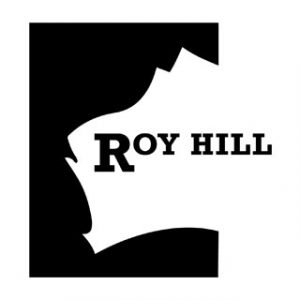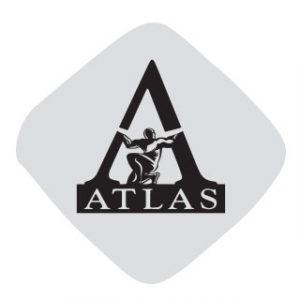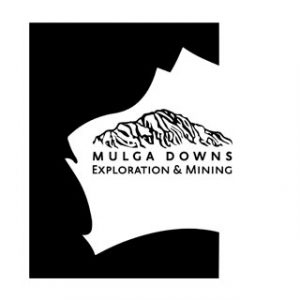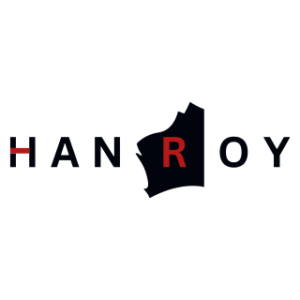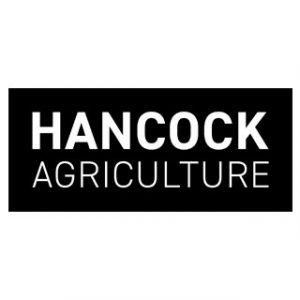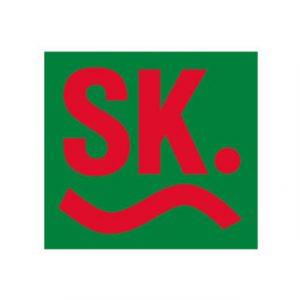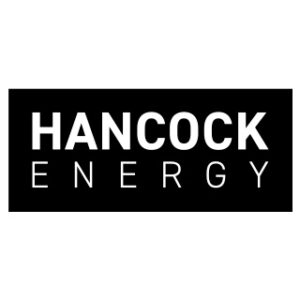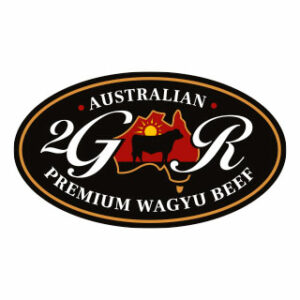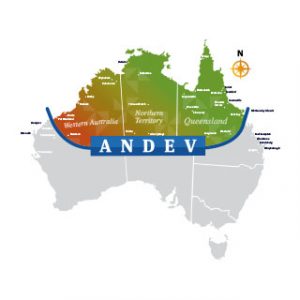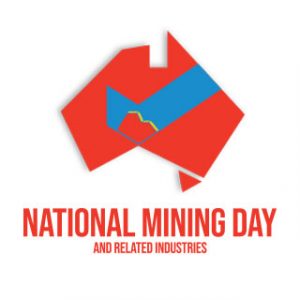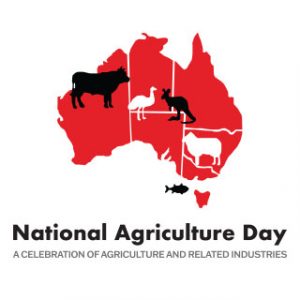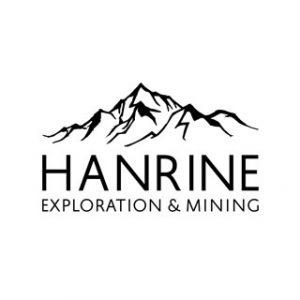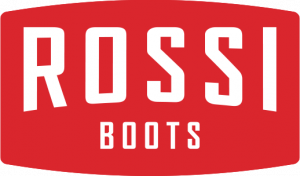Good evening everyone. Garry Korte and I are delighted to be here with you for the Sydney Mining Clubs Christmas dinner, and pleased to be able to present the Roy Hill project described in the Mining Club invitation as “The launch of Big Roy on the East Coast”.
What an exciting time it is for all those who have worked so hard over many years to develop Roy Hill to the point of where it is today, with the first ship currently being loaded in preparation for its departure for Asia!
I was up at the mine site last weekend together with my executive team and daughter Ginia to witness the first low phosphorous fines iron ore being loaded onto the train and then being there to see the train arriving in Port Hedland on Sunday November 22nd, National Mining and Related Industries Day.
It was a very happy, welcome and exciting sound to hear the train horn as it came past us to some rapturous applause and celebratory shouts, albeit in temperatures somewhat higher than 40 degrees! As I speak the Anangel Explorer is being loaded with this very ore at Port Hedland.
Well, despite the naysayers, and there’s many of those in our media! My staff and I did this mega project, thank you to each and every one – approximately 50, 000 people have been involved in making this Australian mega project possible, warmest congratulations to all.
I hope each person who contributed to Roy Hill, will always be proud that they built this mega project, a development that will soon be the largest single iron ore mine in Australia. And a project achieving several important firsts.
Perhaps before I expand some more on Roy Hill and the industry I should share a little of the story of my time as the Chairman of our Australian private company, Hancock Prospecting, which started as a West Australian pastoral and exploration company.
Despite what too many in the media inaccurately imply, Hancock Prospecting hasn’t always been the successful multi-billion dollar company it is today.
The reality was we had many, many tough years. When I took the reins most of the assets had already been sold, what was left was either mortgaged to the hilt, or under legal threat or claim, and with liabilities we weren’t able to pay off for almost a decade, limiting our ability for exploration and investment and growth.
We started from humble beginnings. In the early Roy Hill years with little money for exploration, we had one old caravan on site which then expanded to three – including one for the site office. The geologists and other technical people mainly slept under the stars in their sleeping bags.
In 1992 when we took on the Roy Hill tenements dropped by then iron ore leader BHP, I was the youngest in the company and had just taken on the responsibility of Chairmanship.
Against advice, HPPL applied for Roy Hill and took huge risks on Roy Hill. Staff were saying, “Don’t do it”. Those involved in our company back in 1992 and our external consultant also, thought taking on Roy Hill was the wrong decision. They advised in writing – not to take up Roy Hill. One key report after reviewing BHP exploration results recommended against saying “Without the presence of the Mt. Newman Member formation of significant high grade mineralised bodies is generally precluded and it is recommended that these areas not be considered for acquisition.” Another said……”It is considered unlikely that mineable amounts of high grade ore can be found.”
After all, not only was the company group short of money for such a substantial undertaking, but also when the most knowledgeable company in iron ore in the Pilbara had decided that the Roy Hill area was not of value, after their own initial exploration, you can understand why professional people had their reservations. But I shared my father’s vision and desire for northern development.
Fortunately for us, BHP’s exploration program hadn’t been successful, with their limited drilling not hitting the right areas.
The exploration program was financed by a trickle of money from our company to carry out as much work as we were able to do with very limited funds, and eventually Hancock prospecting discovered the deposits that this great project is based on today.
Unlike what many in media choose to portray, money doesn’t just fall from the sky, even when a tenement is granted, it takes years of work and effort, increasing years, to get through increasing government approvals permits and licences, and massive risk investment, and usually major borrowings.
After more successful exploration, we recognised that for a project like Roy Hill, to be able to support infrastructure for its tonnage over approximately 300 kilometres, a mega-project would be required. And for a project the size of Roy Hill, the banks would prefer to see us with partners of substance.
We achieved such partners, partners who like us, took on still significant risk, given this project was mainly a Greenfield project, plus all the risks a mega project involves, including government approvals risks.
Our partners, Marubeni Corporation, POSCO and China Steel also committed to be customers with over 50% of Roy Hill’s 55 million tonne output committed to them.
I would like to acknowledge our partners, some of whom are here tonight and thank them for their unwavering excellent support.
Usually companies that take on such investments and commitments are much larger than our private company – but the banks supported me.
Our mega financing with 19 of the world’s largest banks, including the 11 largest banks in the world, and 5 ECAs, gained international acclaim, winning a number of financing awards.
Tonight I am joined by the hard working Roy Hill CFO, Mr Garry Korte, who will talk about our record breaking financing which was so critical to enable the development of the project.
Please welcome Garry.
Firstly I would like to acknowledge and pay tribute to Mrs Rinehart for the incredible work that she has done over 20 years to overcome so many challenges to develop the Roy Hill project to where we are today. Without your efforts there would be no Roy Hill. Although I have only been on board for a comparatively short period it has been an exciting journey.
The US7.2B debt financing as many probably already know is the largest project financing for a largely Greenfields mining development in the world. As I found out there is a good reason something is a first. It was pretty tough to get the deal over the line and it took about 2 years of blood sweat and some tears before it finally closed in April 2014.
To make it harder still, we were racing against the clock to get the project financed and built, after a competitor had caused delays with rail route access across their tenements. This meant that we didn’t have the luxury of the usual approach where the full equity and debt funding package is put in place before any substantial work commences.
The partners were faced with the challenge and substantial risk that they would need to start building using their equity funds before we had finalized the debt component of the financing. This provided an immovable deadline and timeframe for the financing, and more than a little bit of motivation for some of us and at times what felt like blow torch type pressure.
It demonstrates the faith of our partners in Roy Hill as a project and in Mrs Rinehart’s ability to make it happen, come what may, as well as an incredible commitment by the shareholders to spend approximately 40% of the project value before the first debt was in place and drawn down. Just to put that into perspective for you – Roy Hill is a $10 billion project.
We also had more than a little help in the marketing of the finance that changed the game. Firstly, Mrs Rinehart hosted a lunch where we invited about 80 bankers from around the world. Her personal touch hosting the lunch in the outback and star power talking to each guest individually meant that we secured pledges virtually on the spot to billions of dollars of commercial bank support.
Then when we had literally run out of time there was a famous dinner hosted by Mrs Rinehart, with the conservative export credit agencies where the head of the lead ECA danced with our Chairman.
This helped his enthusiasm for the project and he announced unexpectedly a few minutes later, at that dinner, that he would bring the date of their next board meeting forward to deal with our financing.
This was a commitment to bring the Board approval meeting forward by three months – three months we desperately needed or we would have run out of money….. and the project would have stopped in its tracks and the CFO would probably have been fired.
We also had our fair share of challenges along the way including incredibly having to deal with a US government budget shutdown in September 2013, which meant the financing negotiations came to a grinding halt.
Who would have thought of needing to contemplate and plan for a US Government shutdown of all things… it just doesn’t happen does it?
By way of explanation USEXIM is one of our ECA financiers and the ECA’s have an agreement that they only negotiate as one group … so this really stretched our timeline.
Then when we were heading into the home straight, a week before we were about to sign with a consortium of 24 banks, Forge Construction Group , one of the main sub-contractors, went into receivership. What timing, you almost couldn’t script it. Forge were the key subcontractor that held the $1.4B contract to build the process plant.
I always say that the projects team made life a lot easier and they scrambled to fix the problem with signing eventually delayed by less than 2 weeks. A financing of this size is a team effort and there was strong leadership from Hancock executives, unwavering support from our shareholders, the Roy Hill team and our financial advisors, many of the people who are here in the room tonight, that allowed us to secure this very valuable financing.
Finally I would like to make a brief mention of what we are doing to manage costs, which is particularly important given the current tough iron ore price environment.
Before I talk about costs I would like to comment on the reports in the media recently implying that it is the Roy Hill project that has caused the iron ore price reductions and grossly overstating our impact.
What seems to have been lost and ignored is that prices dropped last year and further again this year, before Roy Hill has shipped any tonnage at all. The reports are silent on the increases between now and the end of 2017 from other companies which will significantly exceed shipments from Roy Hill.
It will take time for Roy Hill to ramp up to our 55mtpa capacity and their assessments also don’t take into account that over 50% of Roy Hill’s output will be taken by our partners who are outside of China.
Hence, the criticism from some quarters that Roy Hill has apparently single handedly led to the iron ore price reductions we see in the market, is unjustified.
Returning to the subject of managing costs, a subject close to my heart and I know our Chairman’s.
At Roy Hill we are working with suppliers across the board to reduce costs, we have recently reviewed employment costs and there is also a focus on the use of technology to reduce costs further.
The Remote Operations Center located at our head office is up and running and leads the industry in terms of controlling all of our operations from pit to port in one place as well as integrating our production operations with our supply chain and maintenance planning operations.
This control allows the end to end business optimisation, removing silos and eliminating costs associated with sub-optimal planning. We are also using drones for surveying and automation on drills to increase accuracy and eliminate some waste and are investigating whether we can use robotics to assist with conveyor maintenance and refuelling.
Ways need to be found to help Australia maintain its cost competitiveness in an increasingly tough and competitive market. We also must realise the extra cost burden imposed by governments, both state and federal, with their approvals, permits licences and regulatory compliance, and find ways to significantly cut this burden to help our high cost Australian environment maintain its ability to be competitive in world markets.
Thank you for your attention.
Apart from being the largest financing in mainland resource history, ever – we have achieved other notable firsts, such as having the largest ever commercial contract between Australia and Korea when we signed the EPC Construction contract needed to underpin the financing.
So many negative people said we’d never be able to pull the major debt financing off, or build this mega-project … but we have. As Garry mentioned, some of the banks who helped us achieve our financing are here tonite, may I take this opportunity to publicly thank them, if some of the representatives here tonite wouldn’t mind standing, please do.
Please join me in applause.
Thanks to this financing, Roy Hill now has four large mine pits operating successfully with their production well ahead of schedule.
Our 344 kilometre heavy haul railway is complete and employs the latest technologies with options for automation. We have celebrated in the last two months, the production of our first course ore and first fine ore being loaded onto a train, and their deliveries to Port Hedland.
Our dedicated two-berth port facility at Port Hedland is capable of exporting more than 55Mtpa of iron ore as lump and fines. And the first ship is in port, being loaded with our first ore!
Our staff morale is high, we are more than a month ahead of what the partner’s aggressive schedule had planned in the detailed bankable feasibility study. A fantastic achievement. And we currently remain within budget – somewhat of a rarity for a major project in West Australia.
This is an amazing achievement by our executives and project team, and the approximately 50,000 men and women who’ve been involved across the project over years.
In terms of the world iron-ore market, Roy Hill is a low-cost producer, with low phosphorous impurities, significant lump ratio, consistent quality, so we are better situated than most.
With Australia exporting record quantities of almost 800mtpa of iron ore, quality iron ore resources are being consumed at a fast rate and it takes many years to achieve government approvals, permits and licences to enable new mines. Over time the demand supply situation changes.
Roy Hill is a long-term project with a long-term outlook and, approximately 90% of Roy Hill’s quality product is already under long term contracts.
But Australia needs to understand that there is nothing we can do about international prices and if we don’t keep our costs down and export competitively, other nations will.
Roy Hill should serve as a beacon of hope, but Australia needs to do more to unleash the potential of our largely undeveloped North.
We need to stop finding reasons not to do things and pursue ways of making it happen. Special economic zones, working successfully in other parts of the world, could work in our North too, which is why ANDEV, Australians for Northern Development and Economic Vision, has spent years promoting these less government burdened zones. Special economic zones would reduce the cost of developing projects and encourage further investment and growth.
We should be implementing ways to entice investment and welcoming Australians investing in Australia. We need to act to stop the continual decline of investment in Australia.
My father, Lang Hancock, through his discoveries and determination to overcome bureaucracy to enable the benefit of his discoveries, changed Australia’s future. He lobbied for almost 10 years to remove federal and state government impediments to the export of iron ore and the pegging of iron ore in North WA. Since the first significant exports were achieved from the Pilbara in the latter half of the sixties, the WA iron ore export industry has earned a staggering $460 billion plus in export earnings.
This is money that has come into Australia and that has paid wages, been used to purchase goods and services and paid royalties and other taxes, and used for important reinvestment. Indeed enough to change West Australia from a mendicant or handout state to one that contributes to Australia, and has done so for decades.
And, please try to imagine where Australia would be without the $460 billion plus contribution from the iron ore industry alone, let alone the rest of the mining and related industries. How much more debt would our record debt country be in without the staggering contribution from our iron ore and other mining and resources industries?
We’d have surpassed the Greece tragedy years ago.
My father’s achievements commencing with his historical discovery flight back on November 22, 1952 are remarkable in that his legacy helped improve our living standards, our quality of life, and spread opportunities to so many across this country.
Not all of us can make the extraordinary contribution my father did, but I hope you will join with me to stand up for the industry. In a time when government is expanding even more and we have reached record debt in excess of $400 billion, leaders are needed in the mining and related industries community and we need to be far more vigilant as far as big government is concerned.
Thank you!

